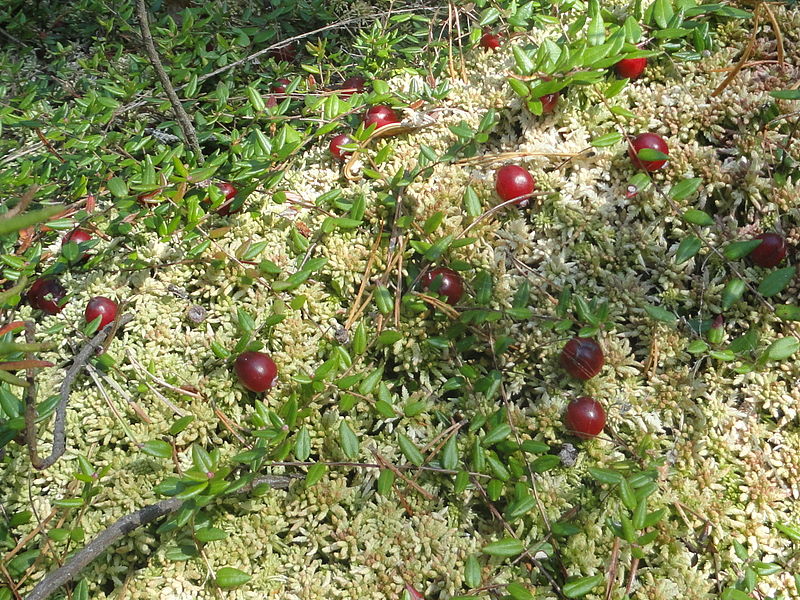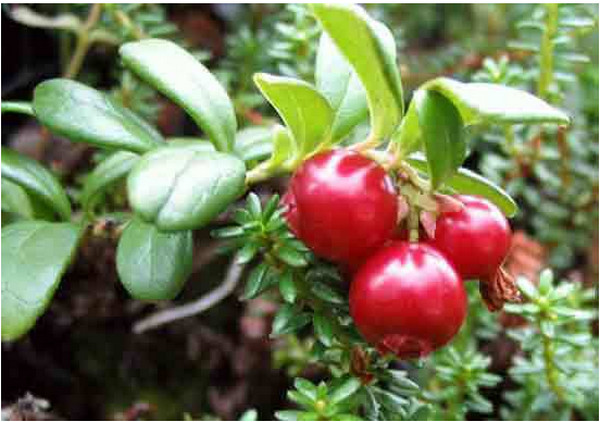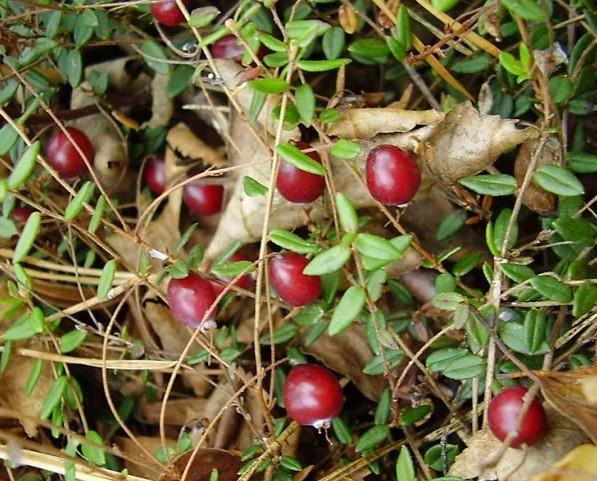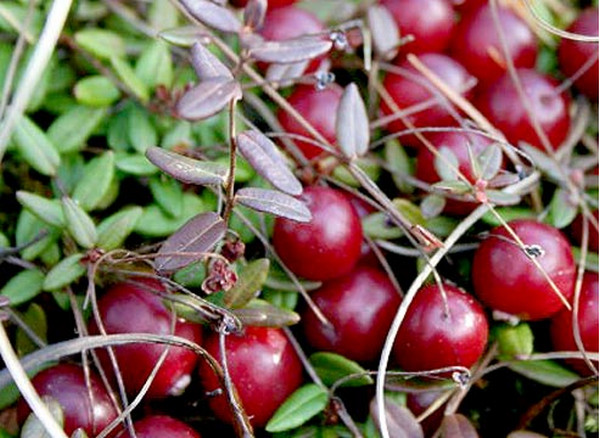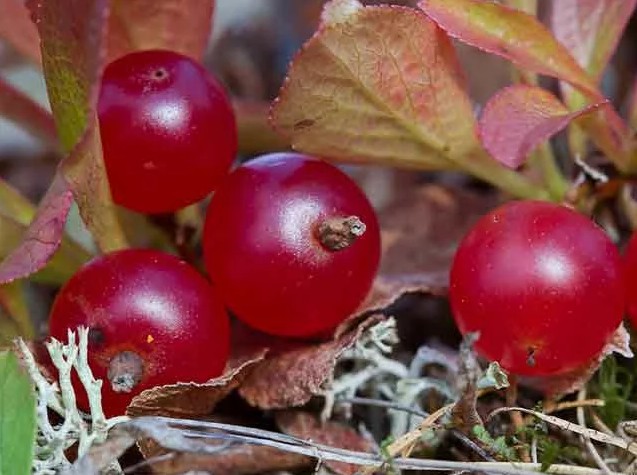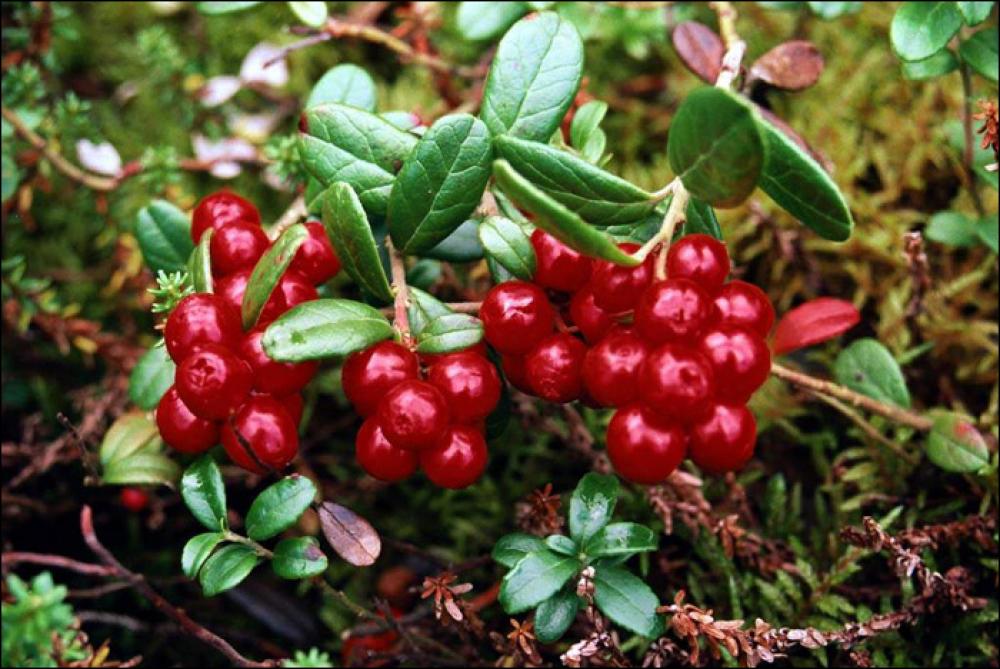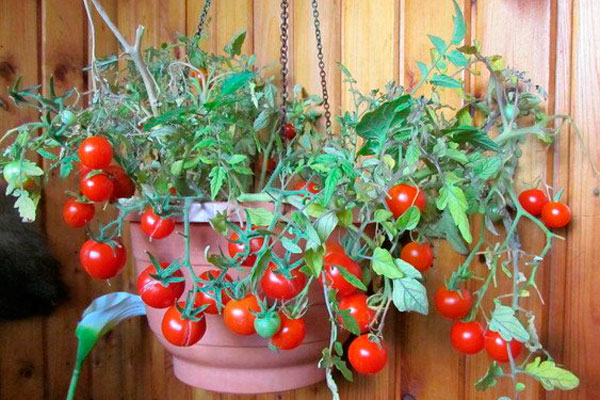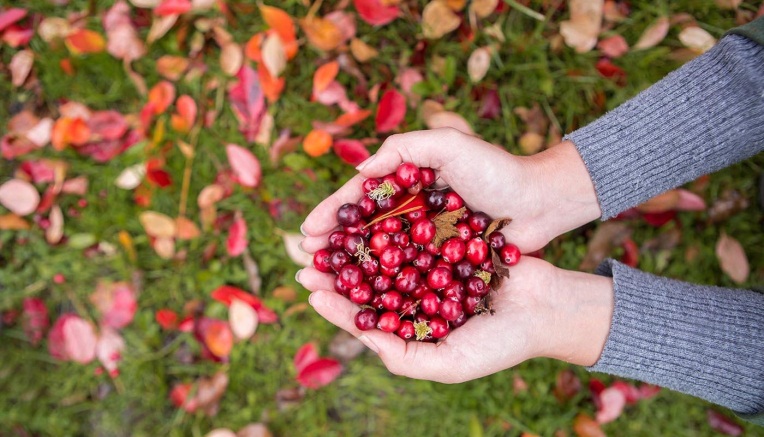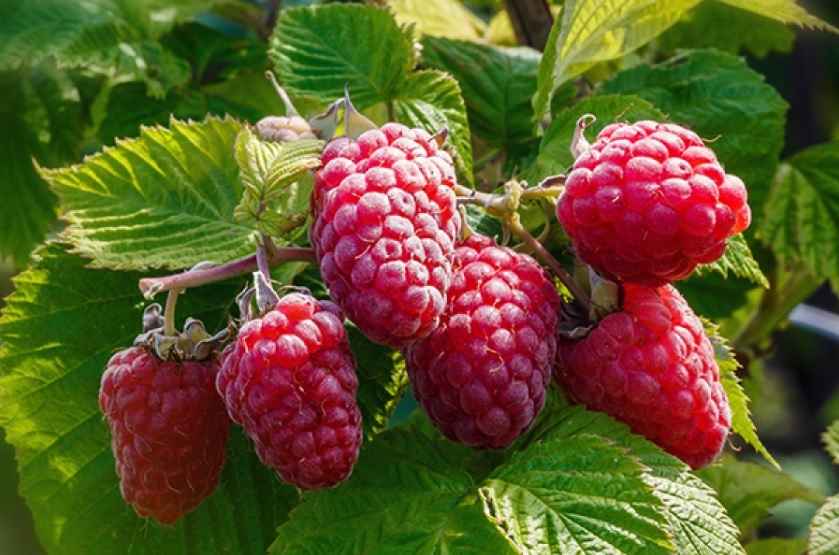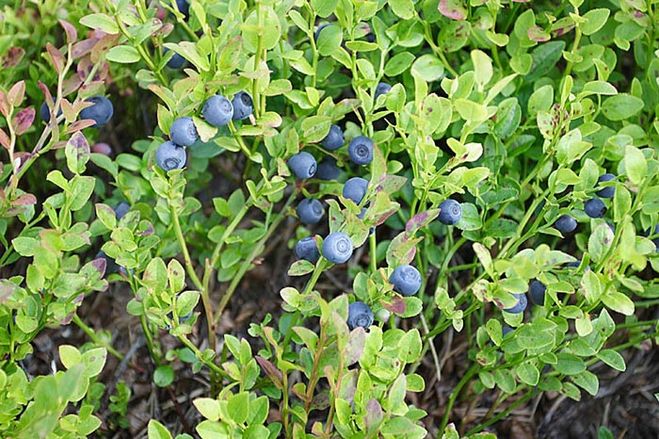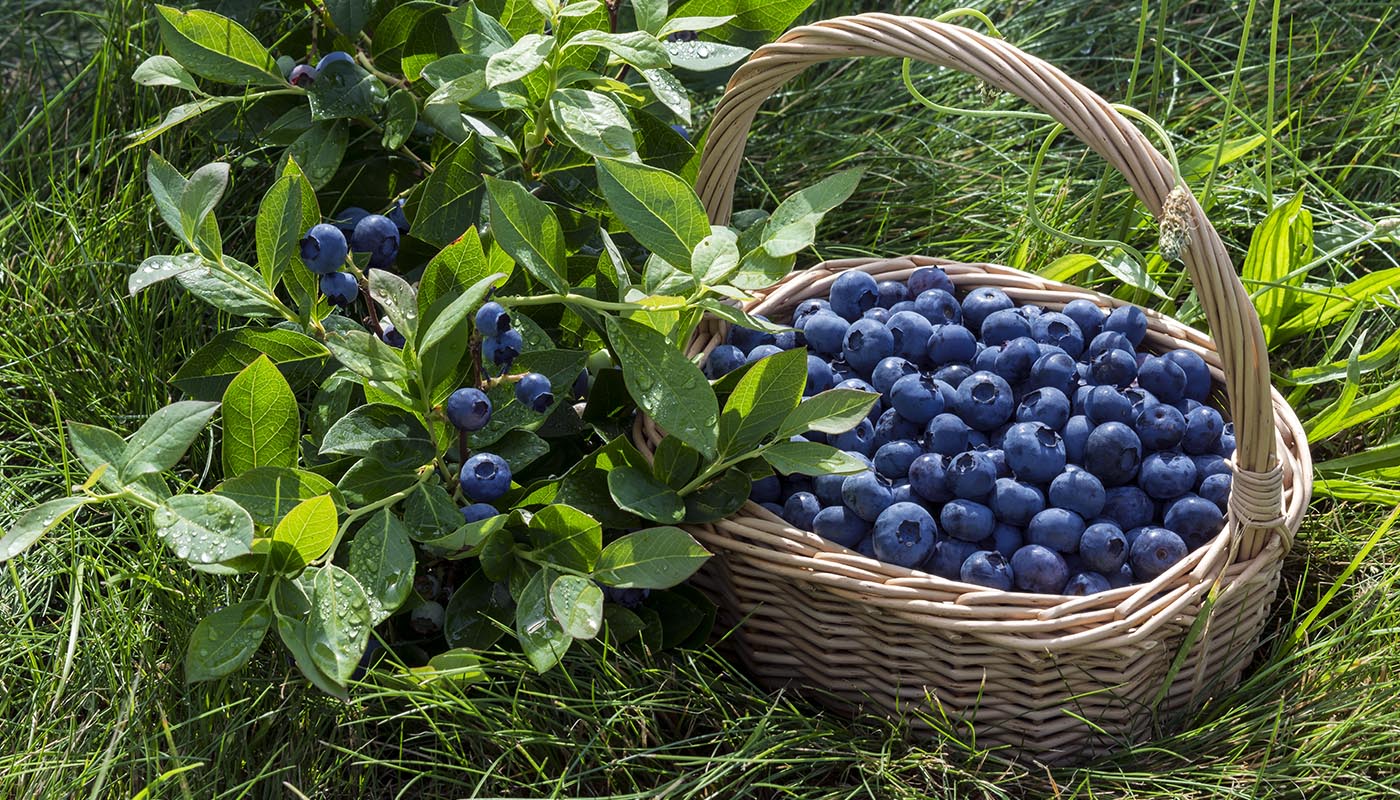Content:
The most valuable berry has been cranberry for a long time. Its chemical composition is unique and can be used to treat a wide variety of diseases. The main feature of the plant is that it is very difficult to grow at home, therefore, basically, people collect it in forests and swamps. Wild berries are very tasty and can be kept fresh for a long time.
General information and varieties
The cranberry got its name because of its appearance during the flowering period. The stalk at the moment of blooming visually very much resembles the head of a crane (beak and neck).
Cranberries are native to arctic evergreen shrubs. Belongs to the Lingonberry family and the genus Oxycoccus ("sour ball"), which, in turn, consists of 5 types of cranberries. Nobody knows the exact age of the plant. The interval of its appearance on the globe refers to the period from 12 thousand to 400 million years ago.
The plant is a perennial shrub that stays green at all times. Differs in low stature, woodiness and great branching.
The root system has fibrous roots, which are represented by a whole network. In some plants, the root system has seven orders. Cranberries are characterized by mycorrhiza, rather than individual root hairs. Cranberry seeds are small and also eaten.
Cranberries are a large set of useful rare components that are of great benefit to the human body. The cranberry berry is of the greatest value due to its high content of anthocyanins and vitamin C.
Description of the composition of cranberries for 100 g of the product
| Substance | % |
|---|---|
| Water | 88.25 |
| Dry matter | 11.75 |
| Lemon acid | 2.45 |
| Sugar | 2.84 |
| Cellulose | 2.01 |
| Pectin | 0.73 |
| Ash | 0.22 |
| Nitrogenous substances | 0.32 |
The fruit is considered to be a powerful remedy in the treatment of inflammation, especially of the urinary tract. Many scientists believe that cranberries should be included in the list of foods that must be eaten as a preventive measure against cancer.
Ordinary
Many people know what the cranberry of this variety looks like. Common cranberries are common in the northern and temperate parts of the Eurasian continent. It is a herbaceous dwarf shrub of evergreen color. Shoots are long (up to 0.8 m) and spread over the surface. They are brown in color and have a woody structure. Leaves are ovoid, green on top and bluish-gray on the bottom, reaching 1 cm in length. On the shoots, there is another arrangement of petiole type. Cranberry bloom begins in late May - early June. The flowers are reddish-pink and penetrating. You can start picking berries in early or mid September, depending on weather conditions. The berries reach 1.6 cm in diameter.
Small-fruited
This is another variety that is found on the Eurasian continent, it is earlier than the common cranberry.The shoot has a filamentous, creeping character, with an approximate length of 0.3 m. The leaves, like berries, are small (3-6 mm), with a leathery surface. The top is dark green, and the bottom has a waxy gray surface. The berries ripen in late July - early August, but small in diameter - 6-8 mm. In many regions of Russia, this variety is listed in the Red Book:
- Ryazan;
- Voronezh;
- Lipetskaya and others.
Large-fruited
This cranberry variety is mostly found in Canada and the United States, with the northern boundary along the 51st parallel. The semi-shrub of large-fruited cranberry has oblong leaves, which, depending on the season, change their color: by autumn the leaves turn red, and in the spring they return their green color. Harvesting can begin in mid-September, around which time the berry ripens. It was on the basis of this variety that varieties of garden cranberries were bred, which are adapted for growing cranberries in nurseries from seeds. The fruits are large enough, the diameter reaches 2.5 cm.
Vaccinium red-fruited
This type of cranberry belongs to deciduous shrubs that prefer mountain forests and partial shade. The berries ripen in August (towards the end) - September. This cranberry variety has two subspecies. One of them is widespread in East Asia (Japan, Korea, China), and the second - in North America (South Appalachian region).
How and where does cranberry grow
During growth, cranberries form a kind of rugs, which are popularly called "Palestinians". The shoots are intertwined during growth. There can be a very long distance from one such site to another. It is quite difficult to pick berries, since sometimes you have to walk several kilometers through the swamp from one clearing of cranberries to another. The cranberry, like a tree, hides its fruits among the foliage, and it is difficult to see the berries at first glance.
For normal growth and development, cranberries need bright places with high humidity, and the water must be clean. There are no special requirements for the soil. Cranberries thrive best in acidic areas with a pH level reaching 2.5. There are also no requirements for the mineral composition. The peculiarity of the plant is that it enters into symbiosis with the roots of fungal spores, which helps it extract nutrients.
In Russia, cranberries grow where old peatlands, swampy lowlands and coniferous forests are located. From a geographical point of view, the cranberry sprouting area is limited on the north side by the Arctic Circle, and on the south side by the 62nd parallel. This location coincides with the location of the swamps. Most of the cranberry plots are in the European part of the continent, in Siberia, Kamchatka and Sakhalin.
Berry picking times in Russia
Most often, in our country, cranberries are harvested immediately after their ripening: September-October, but they love cranberries no less. A feature of this plant is that the fruits tolerate winter frosts well and remain on the shoots, therefore there are three periods when you can pick cranberries:
- Summer. The berry, which is harvested in summer, is not yet fully ripe. It has white or reddish sides. Of course, over time, the fruits will ripen while lying down, but they will not be very tasty. These berries have very little sugar, a lot of acidity, and a slightly bitter aftertaste. The berry is not so juicy, and it contains much less nutrients;
- Fall. Experienced pickers prefer to go to harvest cranberries when they turn brown (indicating maturity).Such berries contain the maximum amount of biologically useful components, especially pectin. It is important for canning and storage. Also, on the skin of the autumn berry, special microorganisms are preserved that are necessary in winemaking for fermentation processes;
- Spring. By spring, the berry accumulates the maximum possible amount of sugar, but, unfortunately, very little vitamin C remains in it. Spring sweet cranberries are very poorly stored and have much worse transportation performance than the fruits of the autumn harvest.
How cranberries are harvested
Since the plant grows at a great distance from human habitation, the collection process requires responsibility and care. Visiting swamps and forests is very dangerous, especially if you don't know the area. Cranberries are much more difficult to pick than blueberries, blueberries or lingonberries.
Like any grass growing in a swamp, cranberries are intertwined with shoots and spread along the ground. At first glance, it is very difficult to see the red berry beads, as they hide in the moss and foliage. Collecting cranberries is a very difficult process, since it takes not only time and effort to search for berry meadows in the swamps, but also the process of sending berries to a basket. The picker can squat for hours, pushing the moss and woven shoots apart, picking berries one at a time. Anyone who does not know what a cranberry plant is, it is better not to go in search of berries. Before going into a swamp or forest, you need to know almost everything about healthy cranberries, especially how and where cranberries grow.
Especially strictly with such prohibitions in protected areas.
Today, cranberries are grown for production purposes. The plant is provided with proper care, a person has learned not to rely on nature, but to independently harvest a useful treasure. To collect cranberries for industrial purposes, special technology and equipment are used.
Large plantations with cranberries are located in swampy pits with peat soil. Before picking berries, plantations are deliberately flooded with water, light berries float to the surface. Then a special tractor is launched, which tears ripe berries from the shoots, and they remain floating on the surface. They are already being caught with special nets.
To date, a large number of varieties of beaks have been developed that can germinate at home. It is important to comply with many requirements and features. If you want, you can try.
